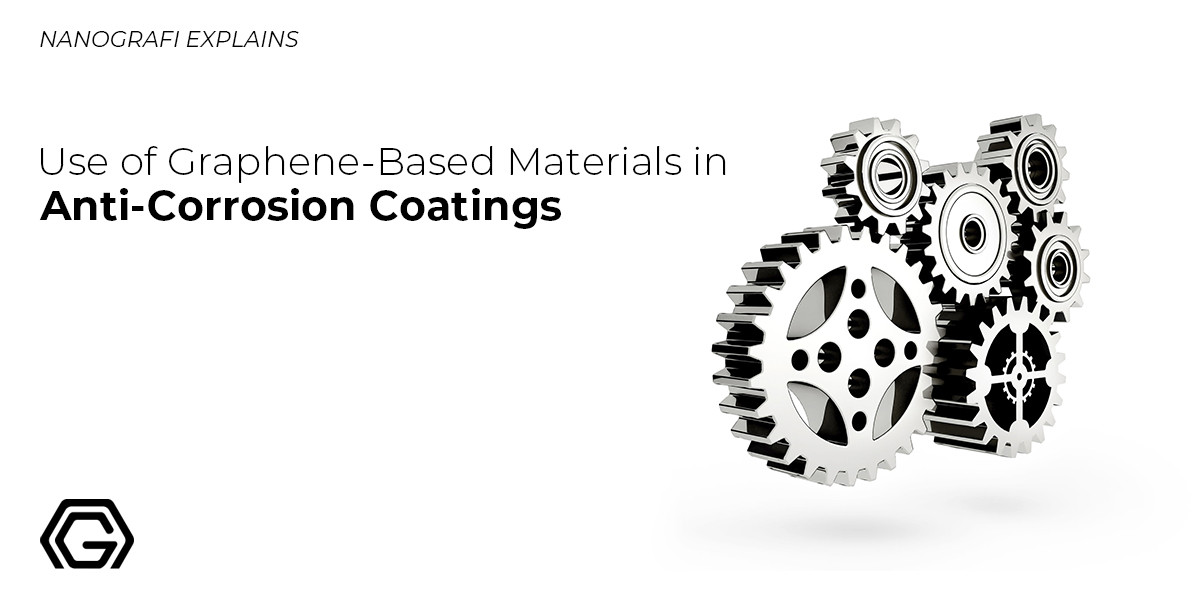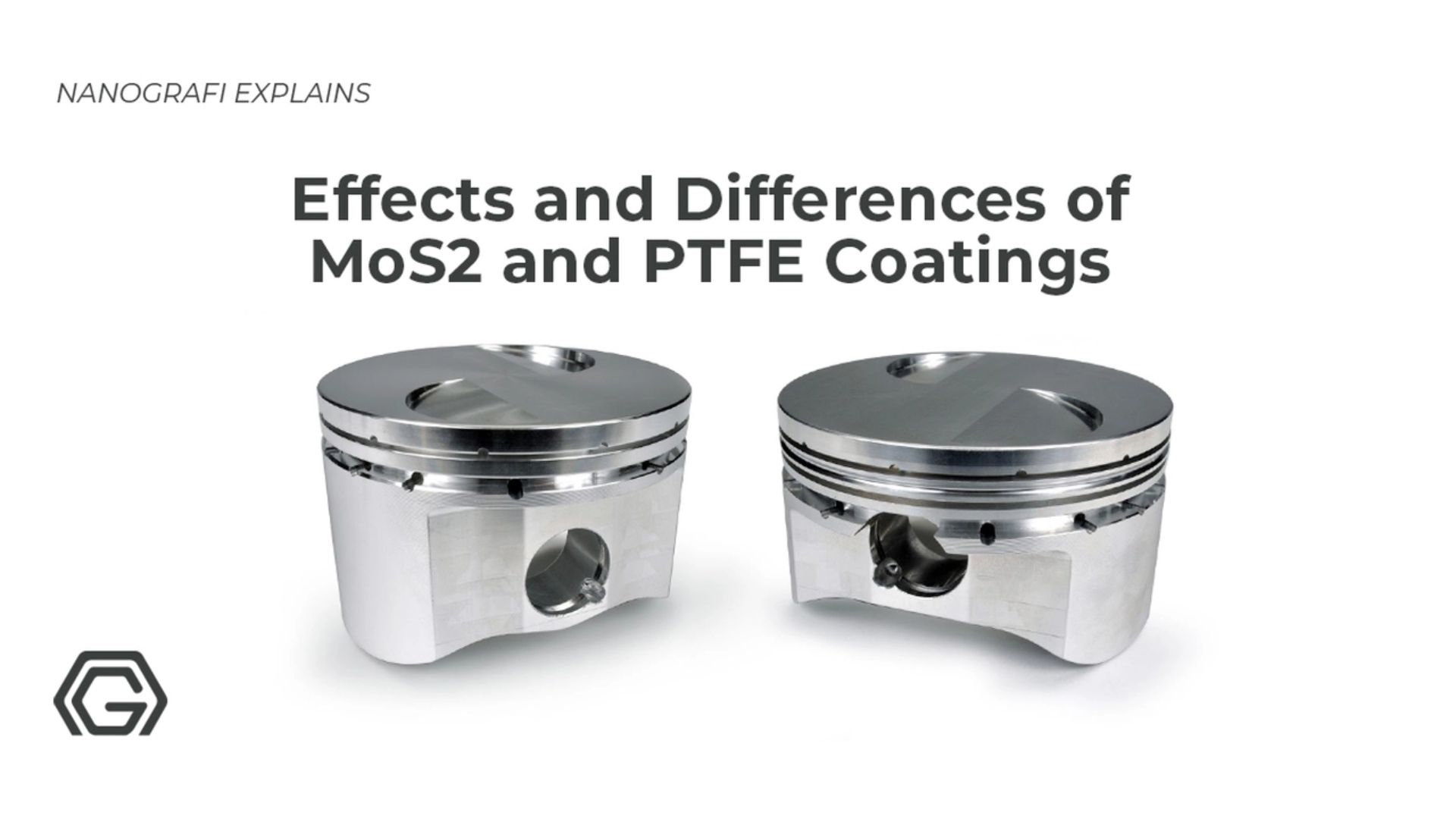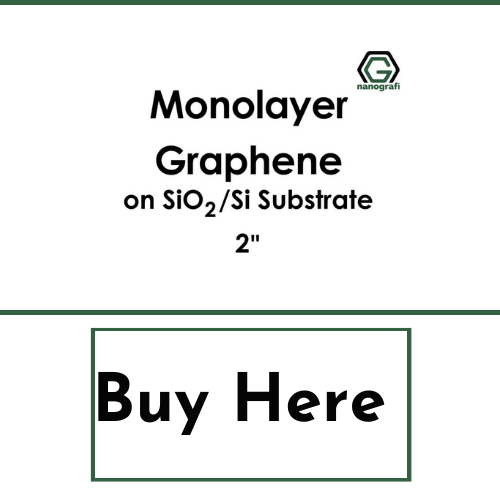The Use of Graphene-Based Materials in Anti-Corrosion Coatings
In the last decade, the use of graphene-based materials has seen a potential rise. This is mainly due to the anti-corrosion properties that this chemical exhibits.
This feature increases the quality of production and the potential life cycle of the products that are manufactured through it.
Introduction
Currently, a wide variety of graphene materials with different morphologies and properties are available, making the need for adequate adaptation to the production method and desired application even more evident. This article aims to give a general overview of current trends in both production and availability. In addition, this work provides a critical perspective on the topic and highlights areas that need further exploration.
Developments in The Application of Graphene As an Additive in Coatings
With the discovery of graphene in 2004 by Geim and Novoselov, a whole new field in materials science, chemistry, and physics opened up. Seventeen years later, we are approaching the time when industry can provide this material in the quality and quantity required for its application. Graphene is known for its excellent electron mobility, the highest thermal conductivity of all materials, on par with diamond and carbon nanotubes (CNTs), and 12 times that of copper, with a mechanical fracture strength of 42 N/m (311 times that of steel) and Young's modulus of 1.0 ± 0.1 TPa.
The application of graphene as a functional layer or as an additive in coatings for corrosion protection has attracted considerable interest in the last decade. The main driving force behind this interest is the need to implement additional functions, improve coating performance and thus extend the life of metal structures in extreme conditions. Graphene's gas impermeability provided the first indication that it is capable of acting as a physical barrier to corrosive species. Moreover, its chemical inertness to oxidative etching up to temperatures of 400 °C, together with the promise of an extremely light coating that does not significantly affect the optical properties of the underlying material, have further motivated research efforts to use graphene in corrosion protection.
Graphene and Graphene-based Materials
Several recent reviews have described the breadth of research work in this area, supporting the fact that graphene and graphene-based materials can and will play a central role in the protection of metal substrates. However, it must be said that remarkable numbers attributed to graphene are commonly (and incorrectly) presented in papers related to any graphene-based material, when in fact they are only applicable to pristine single-layer graphene (SLG). Consequently, the main objective of this review is to provide a critical view of the implementation of graphene and graphene-based materials in the field of protective coatings, combining the description of the different production methods of these materials with an overview of the latest trends in their implementation in corrosion protection, which to the best of our knowledge has not yet been done.
As will be made clear in this review, the range of properties of graphene derivatives obtained by different processes is so wide that grouping them under the single word graphene would be scientifically inaccurate. Therefore, we decide to classify these materials according to the nomenclature, specifically:
Characteristics of Graphene
1. Graphene, graphene sheet, single-layer graphene (SLG), monolayer graphene one layer of carbon atoms with each atom bonded to three neighbors in a honeycomb structure.
2. Bilayer graphene (2LG): a two-dimensional material consisting of two well-defined stacked graphene layers.
3. Few-layer graphene (FLG) a two-dimensional material consisting of three to ten well-defined stacked graphene layers.
4. Graphene oxide (GO) chemically modified graphene prepared by oxidation and exfoliation of graphite, causing an extensive oxidative modification of the basal plane. Graphene oxide is a monolayer material with a high oxygen content, typically characterized by a C/O atomic ratio of approximately 2.0, depending on the method of synthesis.
5. Reduced graphene oxide (rGO) a form of graphene oxide with reduced oxygen content.
6. Moreover, based on these definitions, monolayer, bilayer, or multilayer graphene films or flakes will generally be grouped under the term “graphene,” while any other two-dimensional carbon materials such as GO or rGO will be referred to. as "graphene-based materials".
This review is divided into four main sections. First, different production methods are introduced, with special attention paid to methods for obtaining high-quality graphene, high-performance graphene production processes, and methods for obtaining graphene oxide and reduced graphene oxide. The next two sections are devoted to anti-corrosion applications, with work related to graphene and graphene-based films and composites using graphene discussed separately. The review concludes with a critical review of the field that describes not only the benefits but also the challenges associated with the implementation of graphene and graphene-based materials for corrosion protection.
Conventional High Crystalline Quality Graphene Production Methods
The first successful method of graphene isolation was the mechanical exfoliation of graphite by gradual peeling using adhesive tape. This method produces high-quality, single-crystalline, one-atom-thick graphene flakes. However, its throughput is very low and its upscaling is unreasonable.
One of the first alternative synthesis methods to emerge was that of epitaxial graphene obtained by graphitization of silicon carbide (SiC). By heating single crystal SiC under ultrahigh vacuum (or even atmospheric pressure) conditions, the Si atoms are sublimed, while the remaining C atoms undergo graphitization. This process can occur on both the Si-terminated side and the C-terminated side. In the former case, a C-rich buffer layer covalently bonded to the substrate is present under the formed graphene, while in the latter case the interaction with the substrate is much weaker.
With the emergence of this synthetic approach, the obtained graphene was quickly found to be of high quality, with charge carrier mobilities of up to 27,000 cm2 V−1 s−1 reported as early as 2006, for graphene obtained on the C-terminal face. However, the main disadvantage of the synthesis of graphene from SiC remains the high cost of the substrates and the associated limitations in terms of size and difficulty of micromachining the obtained material.
Chemical Vapor Deposition
Alternatively, chemical vapor deposition (CVD) has been one of the most prominent techniques for graphene synthesis since the first reports showing the surface segregation of carbon atoms into graphene domains and continuous transition metal layers. Yu et al. for example was able to create high-quality graphene layers by exposing Ni foil to a mixture of CH4, H2, and Ar at 1000 °C (at atmospheric pressure). The process was explained based on the decomposition of hydrocarbon gas with the subsequent diffusion of carbon atoms into the metal foil. Controlled cooling of the substrate then leads to the segregation of carbon, which creates graphene layers on the surface. In addition, the authors showed that this graphene can be transferred to insulating substrates by using a support layer (silicone rubber) deposited on the grown film, followed by etching the metal and depositing the graphene/support layer on the desired substrate.
To get more information about applications of graphene on anti-fricton coatings,
you can read our blog post here.
Catalytic Effects
Shortly thereafter, copper emerged as the preferred growth substrate due to its low carbon solubility and catalytic effect on the decomposition of hydrocarbon precursors, allowing the growth of continuous SLG films. A typical CVD synthesis of graphene on copper is performed at temperatures close to the melting point of copper. However, low-temperature (300–400 °C) growth using microwave plasma, which aids the decomposition of hydrocarbon precursors, has also been demonstrated. Currently, the CVD method makes it possible to obtain graphene domains exceeding millimeter sizes and arbitrarily large single-crystal films, as well as graphene with a charge carrier mobility of up to 350,000 cm2 V−1 s−1, with growth both at low and possible atmospheric pressures.
It should be emphasized here that in many cases, epitaxially or catalytically grown graphene must be transferred to another substrate where it can be processed or incorporated directly for the desired application. An example of this is the transfer of graphene to insulating substrates for the lithographic production of electronic devices or to transparent substrates for optical applications.
In the case of CVD-grown graphene on copper, the copper can either be etched away or the graphene can be separated from the copper. The latter can be done electrochemically, by creating bubbles of hydrogen gas by hydrolysis between graphene and copper, separating the former from the copper. Alternatively, water molecules can be intercalated between the graphene and the substrate, weakening their interaction and allowing the sample to be sampled using the stamp. Either way, in most cases a support material must be used to prevent tearing or other damage to the graphene film after it is separated from the copper.
The most commonly used support material is poly(methyl methacrylate) (PMMA), which is usually deposited on the grown graphene at the beginning of the transfer process. However, removal of the PMMA support layer after the transfer is complete, which is typically done by placing the transferred sample in acetone, leaves PMMA residues that are known to be difficult to completely remove. These residues affect the properties of graphene, mainly by leading to p-type doping. Some solutions to this problem have been described in the literature, specifically using high-temperature annealing or plasma processing. Other approaches try to avoid PMMA entirely by exploring other support materials that can be removed without leaving any residue.
Regardless of the production method, highly crystalline single-layer graphene can be characterized by narrow 2D and G characteristic Raman peaks, with a high ratio of the respective intensities, as well as the absence (or very low intensity) of the characteristic D peak associated with structural defects.
Sonication
During sonication, ultrasonic waves produce localized compression and rarefaction in the liquid medium, creating vacuum cavities that then collapse to form high-pressure jets. These jets are able to peel off the graphene layers from the graphite and also weaken the Van der Waals interaction between the layers. This facilitates the intercalation of solvent molecules between the graphitic planes, allowing further exfoliation and subsequent stabilization of the dispersion. As with other graphite exfoliation approaches, care must be taken in the choice of dispersing solvent.
Hernandez et al. for example noted the role of NMP in the successful dispersion of carbon nanotubes. The authors then used it in a similar way to disperse graphite powder using bath sonication, resulting in flakes with 5 or fewer graphene layers with lateral dimensions on the order of micrometers. Similar results were also obtained with the solvents g-butyrolactone (GBL) and 1,3-dimethyl-2-imidazolidinone (DMEU), which are also known for their ability to disperse carbon nanotubes.
A more detailed study of sonication dispersion in NMP showed that for up to 343 h of sonication in the bath, the average number of layers in the flakes does not change and remains around 3, while the lateral size follows a t−1/2 dependence. As a disadvantage, the authors point out the high boiling point of NMP (this problem also applies to some other solvents used in the production of graphene by sonication, e.g. benzylamine). Additionally, as NMP is a polar solvent, it imposes certain limitations on the chemistry of the obtained dispersions, for example, it is hygroscopic (and thus requires the exclusion of water).
Dispersion
In an attempt to overcome the problems related to the use of NMP as a dispersion solvent, its substitution with ethanol, followed by successive steps of sonication, centrifugation, and filtration, has been shown to lead to stable dispersions of graphene flakes. Dispersion in a non-polar solvent was also tested using ortho-dichlorobenzene (ODCB) ODCB, which is aromatic, is a known reactive solvent for fullerenes and a dispersant for carbon nanotubes, which is believed to be effective due to π-π interactions (although it must be noted, that other aromatic solvents such as benzene, toluene, xylenes, chlorobenzene, and pyridine were not unsuccessful in dispersing graphite in this study)
In addition, it has a surface tension of 36.6 mJ m−2, which is close to the range of surface tension that has been suggested to be good for graphite exfoliation. Also in the context of aromatic molecules, but in this case, perfluorinated, hexafluorobenzene (C6F6), octafluorotoluene (C6F5CF3), pentafluorobenzonitrile (C6F5CN) and pentafluoropyridine (C5F5N) have proven successful as solvents for ultrasonication of graphite to graphene. The results are explained based on the electron-withdrawing properties of the fluorine atoms, leading to charge transfer through π-π stacking, which promotes solubilization.
Pyrene- and anthracene-based compounds have also been found use as dispersing agents during sonication exfoliation, such as 1-pyrenemethylamine (Py-NH2) and 1,3,6,8-pyrene-tetra sulfonic acid (Py-SO3), as well as 1-pyrene carboxylic acid (PCA) and 9-anthracenecarboxylic acid (9-ACA). O'Neill and coworkers investigated low-boiling solvents such as chloroform, acetone, and isopropanol. In particular, isopropanol showed good results, both in terms of the number of layers obtained (less than 5) and stability (with 96% of the graphene remaining stably dispersed up to 200 h after the initial dispersion). The authors claim that the Hansen solvent solubility parameters, especially the dispersion parameter δD, determine the quality of dispersion success, which must match the graphene parameters (δD = 18 MPa1/2, δP = 9.3 MPa1/2, and δH = 7.7 MPa1/2 ) for better results.
Shear Stress Exfoliation
Shear exfoliation of graphite can be performed in liquids using various types of equipment, relying purely on fluid dynamics considerations in laminar or turbulent flow regimes. Specifically, some authors have used a rotating tube at sufficiently high rotation speeds to produce swirling fluid films (e.g., 7000 rpm) that are capable of producing sufficient shear forces to overcome van der Waals interactions. Graphite precursors are mixed with an organic or aqueous medium and exfoliation occurs on the tube wall by combined lifting and sliding of the graphene sheets.
Tube inclination was found to play a critical role in exfoliation, inducing turbulence through combined centrifugal and gravitational interactions that are key to the lift/slide process. Centrifugal forces hold the graphite precursors to the tube wall and allow the graphene sheets to slide. Even though the principle has been successfully demonstrated for the production of high-quality graphene, the shear stresses capable of exfoliating the graphene are localized only on the surface of the tube, which significantly limits the yield. This means that fast-rotating tubes with a very large surface area are needed to improve the yield to a satisfactory level, which presents many technological challenges at increased costs. It was therefore obvious that systems with higher shear stress-energy are needed to obtain graphene more quickly and to increase production yield.
To get more information about coatings,
you can read our blog post here.
In this sense, it has been found that compressed fluids containing graphite precursors embedded in constriction channels also lead to the successful exfoliation of graphene and other 2D materials through fluid dynamics mechanisms. This type of exfoliation has been the subject of theoretical simulations showing several mechanisms contributing to exfoliation in addition to shear stresses, namely collisions, cavitation, and pressure release, with the latter two mechanisms exerting normal forces to aid exfoliation. Those that cause shear forces include turbulence-induced (Reynolds) stresses, velocity gradient stresses, and collisions between flocs.
Remarkable yields of 15% mostly FLG with little oxidation were demonstrated using high-pressure pumps and closed circulation loops. Interestingly, although constriction tubes are usually constructed in a straight geometry, recent theoretical simulations have shown that helical tubes allow higher shear stresses and thus more efficient exfoliation, even though turbulence is present in both cases.
Anti-Corrosion Coatings Using Graphene and Graphene-Based Films
Corrosion, the gradual degradation of metals and alloys due to chemical and/or electrochemical reactions with the surrounding environment, has an undeniable impact on ecological health and economic losses. The material deteriorates, the appearance changes significantly, the mechanical properties are lost and finally, the affected metal parts lose their functionality. The protection of such structures is therefore of the utmost importance.[14] Surface treatment technology is among the plethora of approaches developed to ensure the protection of metal surfaces and improve their quality. In addition to passive barrier properties and aesthetic appearance, coating formulations can serve other functional purposes, such as active self-healing action induced by specific stimuli.
In terms of corrosion prevention, the key requirements for an ideal barrier coating system include inherent resistance to degradation in hostile conditions, effective resistance to the penetration of corrosive agents, and mechanical integrity for the desired service life of the coated components. Conventional anti-corrosion coating technologies, which include, for example, the use of hexavalent chromium, have a negative impact on the environment due to the carcinogenic risk of such compounds. In addition, traditional approaches reveal several limitations, such as susceptibility to heat damage, limited chemical stability, potentially high cost, and the possibility of altering the physical properties of the metals being protected. Thus, there is a need for a disruptive, environmentally friendly alternative to overcome the above barriers and achieve long-term corrosion mitigation.
Graphene has emerged as a promising candidate due to its remarkable set of properties resulting from its unique structure. Since the barrier effect is one of the most important characteristics of a multilayer system, much attention has been paid to this material due to its impermeability to liquids and gases. In addition to preventing the transport of corrosive or oxidizing substances towards the underlying substrate without significantly altering its thermal conductivity and optical properties, graphene-based films enable the reduction of the deposited layer in terms of quantity and volume. In addition, due to its chemical inertness, especially when it comes to oxidation, graphene is highly resistant to corrosion under conditions where other substances would undergo chemical transformations.
However, despite this exceptional combination of properties, the application of graphene in corrosion science seemed inconceivable at first because it was obtained exclusively by mechanical exfoliation, a low-throughput, non-scalable method that makes graphene flakes smaller than 0.1 mm. However, the discovery that even the smallest helium atoms cannot penetrate the dense lattice structure of graphene, together with the first large-scale syntheses of such material on copper substrates by CVD, changed this scenario significantly. Key research conducted by Chen et al. in turn can be considered a breakthrough in the application of graphene as an anti-corrosion coating.
For the first time, Chen and co-workers unequivocally demonstrated the ability of CVD-grown graphene layers to protect refined metals in a hostile environment for a relatively short period. Although the first studies on the use of graphene in the field of corrosion prevention appeared later than studies in other engineering fields, the number of citations is increasing at an accelerating rate, reflecting the rapidly growing interest of corrosion scientists and engineers in this multi-purpose material. Research on anti-corrosion technologies based on graphene can be divided into two generalized groups, pure graphene anti-corrosion coatings, and composite graphene anti-corrosion coatings.
Preparation Methods and Corrosion Resistance Performance
A study by Chen et al. in 2011, on the ability of graphene films to protect metals from reactive environments, drew considerable attention to the use of graphene and graphene oxide films as protective layers due to their barrier effect. Several studies have demonstrated the benefits of applying graphene layers to the surface of metals such as nickel alloys, copper alloys, and steel. The protective graphene layer could be prepared directly on the metal surface by methods such as CVD, electrophoretic deposition (EPD), and laser fabrication methods, or it could be transferred to the surface using mechanical transfer technology.
Among all the preparation techniques, CVD is the most commonly used method due to its simplicity, film quality, and ability to coat large areas. The distance between the graphene film and the metal substrate greatly affects the bond strength between graphene and metal, and graphene films prepared on different metals show different structures. The force between carbon atoms and copper, nickel, and cobalt have been reported to be weaker compared to gold, silver, and palladium. Therefore, other techniques such as mechanical transfer are reported to be used to coat any metallic materials with high-quality graphene films.
Anisur et al. prepared graphene films on a nickel surface by CVD and investigated the role of hydrogen flow and cooling rate during graphene growth on the barrier properties and defect density of the film. Electrochemical impedance spectroscopy (EIS) and potentiodynamic tests on samples immersed in 0.1 M NaCl solution showed that graphene coatings prepared on Ni in an H2-free environment offer almost an order of magnitude better corrosion resistance than uncoated Ni. SEM revealed that hydrogen flow during graphene growth facilitated the formation of wrinkles, resulting in similar corrosion resistance to uncoated Ni. Ye et al prepared graphene on Ni substrates using a laser fabrication method at room temperature, which shows the possibility of fabricating large-area graphene films with excellent anti-corrosion performance compared to the bare substrate.
To get more information about Mol-C products, you can visit our official website.
Conclusion
In light of the above-mentioned prospects, it is easy to state that graphene acts as an excellent anti-corrosion agent for materials that require electrochemical activity. Its structure and chemical properties facilitate the flow of charges and prevent rusting of the iron itself. So, it can be concluded that certain changes and the use of graphene-based materials are healthy for both the production and availability of products.
To get more information, you can visit Blografi.
References
- Novoselov, K. S.; Geim, A. K.; Morozov, S. V.; Jiang, D.; Zhang, Y.; Dubonos, S. V.; Grigorieva, I. V.; Firsov, A. A. Electric Field Effect in Atomically Thin Carbon Films. Science 2004, 306, 666–669.
- Bolotin, K. I.; Sikes, K. J.; Jiang, Z.; Klima, M.; Fudenberg, G.; Hone, J.; Kim, P.; Stormer, H. L. Ultrahigh Electron Mobility in Suspended Graphene. Solid State Commun 2008, 146, 351–355.
- Banszerus, L.; Schmitz, M.; Engels, S.; Dauber, J.; Oellers, M.; Haupt, F.; Watanabe, K.; Taniguchi, T.; Beschoten, B.; Stampfer, C. Ultrahigh-Mobility Graphene Devices from Chemical Vapor Deposition on Reusable Copper. Sci. Adv. 2015, 1, e1500222.
- Balandin, A. A.; Ghosh, S.; Bao, W.; Calizo, I.; Teweldebrhan, D.; Miao, F.; Lau, C. N. Superior Thermal Conductivity of Single-Layer Graphene. Nano Lett. 2008, 8, 902–907.
- Nika, D. L.; Balandin, A. A. Phonons and Thermal Transport in Graphene and Graphene-Based Materials. Rep. Prog. Phys. 2017, 80, 036502.
- Balandin, A. A. Phononics of Graphene and Related Materials. ACS Nano. 2020, 14, 5170–5178.
- Lee, C.; Wei, X.; Kysar, J. W.; Hone, J. Measurement of the Elastic Properties and Intrinsic Strength of Monolayer Graphene. Science 2008, 321, 385–388.
Recent Posts
-
Advanced Materials for Unmanned Aerial Vehicle (UAV) Protection Against Laser
Consider a UAV on a critical mission, rendered inoperative by a sudden laser attack. With the increa …26th Jul 2024 -
Simulation and Modeling of Material Properties
Our world is composed of a dazzling array of materials, each with its own unique properties that dic …19th Jul 2024 -
Advanced Coatings for Superior Corrosion and Wear Resistance
Corrosion and wear pose significant challenges across various industries, leading to substantial eco …12th Jul 2024








